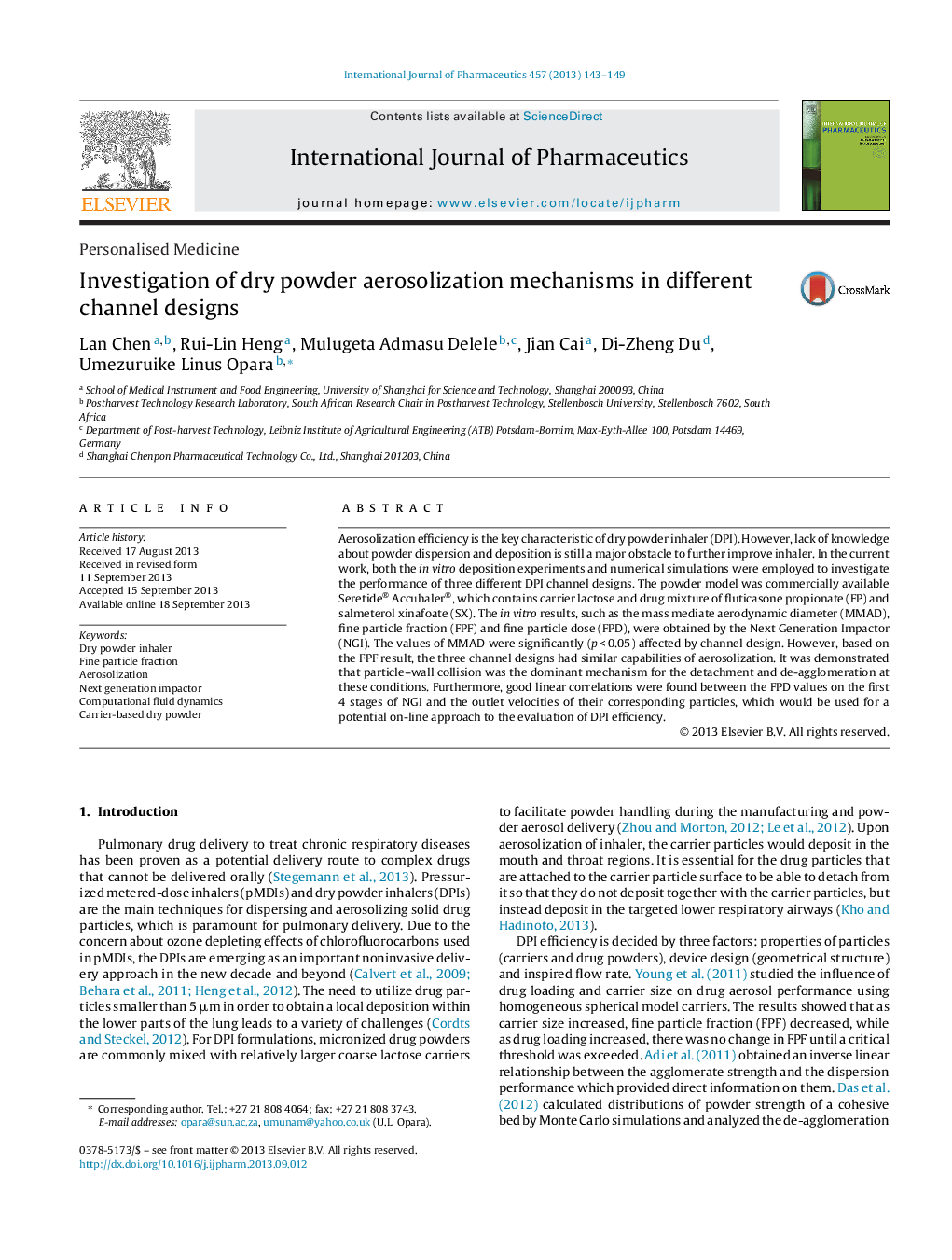| Article ID | Journal | Published Year | Pages | File Type |
|---|---|---|---|---|
| 5820142 | International Journal of Pharmaceutics | 2013 | 7 Pages |
Aerosolization efficiency is the key characteristic of dry powder inhaler (DPI). However, lack of knowledge about powder dispersion and deposition is still a major obstacle to further improve inhaler. In the current work, both the in vitro deposition experiments and numerical simulations were employed to investigate the performance of three different DPI channel designs. The powder model was commercially available Seretide® Accuhaler®, which contains carrier lactose and drug mixture of fluticasone propionate (FP) and salmeterol xinafoate (SX). The in vitro results, such as the mass mediate aerodynamic diameter (MMAD), fine particle fraction (FPF) and fine particle dose (FPD), were obtained by the Next Generation Impactor (NGI). The values of MMAD were significantly (p < 0.05) affected by channel design. However, based on the FPF result, the three channel designs had similar capabilities of aerosolization. It was demonstrated that particle-wall collision was the dominant mechanism for the detachment and de-agglomeration at these conditions. Furthermore, good linear correlations were found between the FPD values on the first 4 stages of NGI and the outlet velocities of their corresponding particles, which would be used for a potential on-line approach to the evaluation of DPI efficiency.
Graphical abstractSchematic diagram showing the apparatus employed to measure the drug deposition across the dry powder inhaler (DPI) channel models.Download high-res image (92KB)Download full-size image
